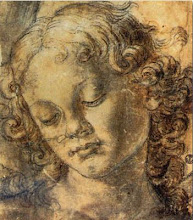 Since their discovery in 1947, the Dead Sea Scrolls have fascinated. They include the earliest known manuscripts of the Bible, as well as nonbiblical literature, and provide information about the history of Judaism between the Bible and the Mishnah. The scrolls also inform us about the background of Christianity. These scrolls are documents of groups of Second Temple Jews embodied partly by a sect inhabiting the Qumran settlement in the Hasmonaean and Herodian periods, between 135 B.C.E. to 68 C.E. Apparently, the site was abandoned before the massacre at Masada in 73C.E. The scrolls were not the library of the Jerusalem Temple and they were not the documents of an early Christian sect. Most scholars identify the community as the Essenes (Essenoi or Essaioi, healers, doers), in a general way, because the sect at Qumran seemed to have been part of a wider movement. The only information we have about the Essenes comes from Greek sources, Philo, Josephus, and Pliny the Elder.
Since their discovery in 1947, the Dead Sea Scrolls have fascinated. They include the earliest known manuscripts of the Bible, as well as nonbiblical literature, and provide information about the history of Judaism between the Bible and the Mishnah. The scrolls also inform us about the background of Christianity. These scrolls are documents of groups of Second Temple Jews embodied partly by a sect inhabiting the Qumran settlement in the Hasmonaean and Herodian periods, between 135 B.C.E. to 68 C.E. Apparently, the site was abandoned before the massacre at Masada in 73C.E. The scrolls were not the library of the Jerusalem Temple and they were not the documents of an early Christian sect. Most scholars identify the community as the Essenes (Essenoi or Essaioi, healers, doers), in a general way, because the sect at Qumran seemed to have been part of a wider movement. The only information we have about the Essenes comes from Greek sources, Philo, Josephus, and Pliny the Elder.The scrolls, discovered and disclosed to the public between 1947 and 1967, describe the lifestyle and beliefs of a group of ascetic, observant Jews, who practiced ritual purity, shared eucharist and were led by a Teacher of Righteousness (Correct Teacher). Women and children seemed to be a part of the community.
The group seemed to be reacting against the Sadducees, extreme Hellenists who perpetrated Hellenistic reforms and opened Judaea to the interference of the Selucids, the Antiochan persecutions, and the Maccabean wars. They aligned with the Sadducean priests who continued to be pious during this period, maintaining the ancient traditions of the Temple in Jerusalem. Old Zadokites, especially pious priests, resented Hasmonaean control of the office of high priest and Temple practice and they resented the Pharisaic hegemony.
The scrolls show us that the history of the biblical canon and its text encompassed a collection of writings that formed the core of Jewish literature for all Jews. The canon was the authorized record of God’s revelation, direct or indirect, to humanity, and determining its meaning was none other than identifying the divine word.
Back then, there existed a tripartite division of the Holy Scriptures:
- The Torah (Five Books of Moses
- Prophets
- Writings
The three together constituted what is now called the Hebrew Bible, Tanakh.
Apocryphal literature was a rewritten or retold Bible, not commentaries or supplements but independent works. The trend of Jewish thought produced a body of materials typified by the revelation of mysteries or secrets of the end of days, or a guided tour of heaven. The body included Enoch, Jubilees, Genesis Apocryphon, Tobit, Testaments (Levi/Naphtali).
There were scrolls on the wisdom and mysteries of creation: Ben Sira, sapiential texts, and mysteries, and there were also found scrolls on biblical interpretation: Septuagint, Targum, and Pesher commentary. Harmonizing exegesis occurred in the Halakhic Midrash (Mishnah (200 A.D.), Midrash (400-1200 A.D.), and Talmud (rabbinic collection).
After the Roman conquest, the Essenes joined the rebel forces. Josephus records that Essenes fully participated in military action, clearly they were not pacifists. In the revolt itself, the Essenes and sectarian groups such as the Dead Sea sect disappeared as independent entities, as did the Sadducess, who lost their power base when the Temple was destroyed.
The scrolls were concerned with the (anti-Hasmonaean) self definition of the sect, how to live as a Jew, the theology of Jewish law, the law of the sect, prayer and ritual, mysticism, messianism and the end of days. It was concerned with probing the depths of God’s commands and looked forward to the permanent establishment of Jerusalem, the Holy City.
These documents represented the shaping of Jewish identity. The rules of Jewish identity are shown in the documents to be firmly in place. They testify to the triumph of the rabbinic consensus, and became the dominant form of Judaism by the end of the second century. Christians and Samaritans, formerly ancient North Israelites, were at the time already regarded as non-Jews.
“As a result of the elimination of its Jewish competition, the continuing standardization of the biblical text and of Jewish law, and a political alliance with the Roman, the Pharisaic-rabbinic movement was able to strengthen its dominant position within Judaism. By this time, Christianity had absorbed certain apocalyptic ideas of the Second Temple period; Judaism, intent on defining itself against the newly emerging religion, accordingly wrote these ideas out of its tradition. By the time of the Bar Kokhba revolt, the last vestiges of Second Temple sectarianism were gone from Judaism. The new consensus was essentially complete. From the crucible of sectarianism, revolt, and restoration had emerged the mature Judaism of the Mishnah and Talmud, which came to serve as the foundation of the Judaism we know today.” (p. 409)




No comments:
Post a Comment